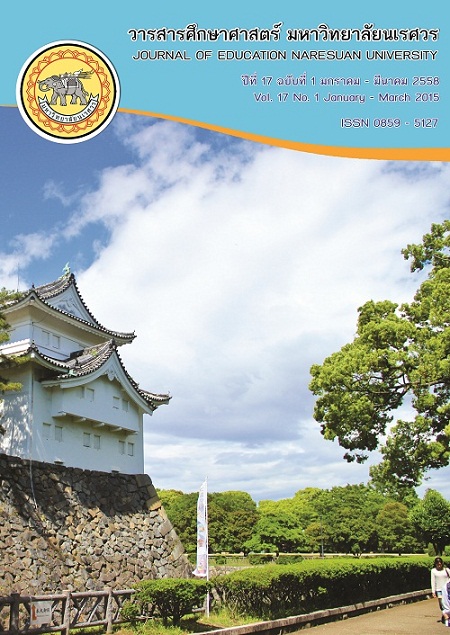แนวนโยบายการแก้ไขพันธนาการแห่งความขัดแย้งและความรุนแรงของนักศึกษาในสถาบันการศึกษาระดับอาชีวะ
Main Article Content
Abstract
บทคัดย่อ
บทความนี้เป็นบทความทางวิชาการมีวัตถุประสงค์เพื่อนำเสนอแนวนโยบายการแก้ไขพันธนาการแห่งความขัดแย้งและความรุนแรงของนักศึกษาในสถาบันการศึกษาระดับอาชีวะ โดยสำรวจสถานการณ์จากอดีตสู่ปัจจุบันว่าสถานการณ์การทะเลาะวิวาทและการก่อให้เกิดความรุนแรงจากอดีตสู่ปัจจุบัน โดยสรุปสาเหตุหลักที่ก่อให้เกิดความรุนแรงที่นำมาซึ่งความเสียหายซึ่งชีวิตและทรัพย์สินโดยส่วนใหญ่เกิดจากความรู้สึกปกป้องศักดิ์ศรีสถาบัน และผนวกกับความเป็นวัยรุ่นเป็นแรงขับ ซึ่งแนวคิดทฤษฎีสำคัญในการกำหนดสร้างแนวทางมาตรการปลดพันธการความรุนแรงในสถานศึกษาระดับอาชีวะได้แก่ แนวทางไกล่เกลี่ยโดยเพื่อน (Peer Mediation) และแนวคิดเรื่องสันติวัฒนธรรมซึ่งเป็นสภาวะที่มีความสมดุล กลมกลืนกันของอัตลักษณ์ ทัศนคติ คุณค่า ความเชื่อและแบบแผนการปฏิบัติในการใช้ชีวิตและความต้องการพื้นที่อิสระเฉพาะตัวของแต่ละบุคคลในสังคมนั้น ๆ โดยแนวทางที่นำเสนอคือ 1) แนวทางความร่วมมือสมานฉันท์ระหว่างสถาบันการศึกษาระดับอาชีวะโดยส่งเสริมความสมานฉันท์ผ่านทางกิจกรรมความร่วมมือทางด้านวิชาการ 2) แนวทางการปรับปรุงด้านการเรียนการสอนของสถาบันการศึกษา 3) แนวทางการสร้างเอกภาพในนโยบายปฏิรูปอาชีวะศึกษาทั้งระบบ 4) แนวทางการสร้างค่านิยมนักศึกษาอาชีวะขึ้นมาใหม่ ว่าการทะเลาะวิวาทกันมิใช่ทางออกของการแสดงความเป็นลูกผู้ชายและการปกป้องศักดิ์ศรีของสถาบัน 5) การจัดศูนย์รวมข้อมูล (database) ของสถานศึกษาที่มีกลุ่มความเสี่ยงที่จะก่อความขัดแย้งรุนแรงหรือศูนย์เฝ้าระวัง Acheeva Watch กล่าวโดยสรุป การแก้ปัญหาความขัดแย้งและความรุนแรงของนักศึกษาในสถานศึกษาระดับอาชีวะ ต้องมาจากทุกภาคส่วนที่เกี่ยวข้องร่วมมือกัน โดยยึดหลักการสร้างความสมานฉันท์และการปรับเปลี่ยนทัศนคติที่ไม่ดีต่อกันโดยทั้งสังคมมีส่วนในการทำให้เกิดความรุนแรงขึ้น เช่น ทั้งจากผู้ปกครองบางคน สื่อมวลชนบางกลุ่ม นักศึกษารุ่นพี่บางคน คณาจารย์บางคนและสภาพแวดล้อมต่างๆ การปรับเปลี่ยนทัศนคติที่ไม่ดีต่อกันจึงต้องใช้เวลาอย่างต่อเนื่องยาวนาน และจะต้องใช้ความอดทนในการเผชิญกับทัศนคติและความเคยชินที่ฝังรากลึก โดยมีแนวทางที่หลากหลายในการเปลี่ยนแปลงทัศนคติ
คำสำคัญ: ความขัดแย้ง/ ความรุนแรง/ สถาบันการศึกษาระดับอาชีวะ
Abstract
The objective of this academic article is to purpose concepts, Theory, values and the challenges for peacefully coexistence in vocational institutions/college as an alternative policy recommendation. Peer Mediation and Peace in Culture (San ti wattana tam) is aim to build social harmony back again by encouraging the learners in vocational schools and colleges to take responsibility for their actions and to repair the harm they have done by apologizing to their crime victims and create the peacefully friendship between the vocational institutions. This article purposes the policy recommendations for disengagement from direct, structural and cultural violence in the vocational institutions in Thailand are 5 recommendations. The first policy recommendations is academic cooperation in vocational institutions, the second policy recommendations : change creation in learning and teaching process of vocational institutions, the third policy recommendations: reformation of vocational institutions process in harmony, the forth policy recommendation: creation the new values for vocational learners coexistence and change the old value that the best gentleman fight for the institution, the fifth policy recommendation: construction the database center called “Acheeva Watch”
In conclusion, conflict resolution in vocational schools should cooperate with various organizations such as governmental organizations ,vocational schools and colleges, families, mass media, college lecturers, college friends and environment to support peace in vocational schools. Attitude modification for good relationship between vocational schools take a long period. The tolerance in the facing of familiar and old style attitude is essential for attitude change.
Keywords: Conflict/ Violence/ Vocational School
Article Details
The owner of the article does not copy or violate any of its copyright. If any copyright infringement occurs or prosecution, in any case, the Editorial Board is not involved in all the rights to the owner of the article to be performed.


